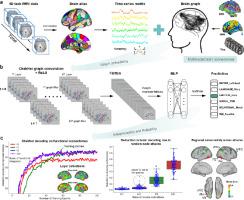Medical Image Analysis ( IF 10.9 ) Pub Date : 2022-06-07 , DOI: 10.1016/j.media.2022.102507 Yu Zhang 1 , Nicolas Farrugia 2 , Pierre Bellec 3

|
Decoding cognitive processes from recordings of brain activity has been an active topic in neuroscience research for decades. Traditional decoding studies focused on pattern classification in specific regions of interest and averaging brain activity over many trials. Recently, brain decoding with graph neural networks has been shown to scale at fine temporal resolution and on the full brain, achieving state-of-the-art performance on the human connectome project benchmark. The reason behind this success is likely the strong inductive connectome prior that enables the integration of distributed patterns of brain activity. Yet, the nature of such inductive bias is still poorly understood. In this work, we investigate the impact of the inclusion of multiple path lengths (through high-order graph convolution), the homogeneity of brain parcels (graph nodes), and the type of interactions (graph edges). We evaluate the decoding models on a large population of 1200 participants, under 21 different experimental conditions, acquired from the Human Connectome Project database. Our findings reveal that the optimal choice for large-scale cognitive decoding is to propagate neural dynamics within empirical functional connectomes and integrate brain dynamics using high-order graph convolutions. In this setting, the model exhibits high decoding accuracy and robustness against adversarial attacks on the graph architecture, including randomization in functional connectomes and lesions in targeted brain regions and networks. The trained model relies on biologically meaningful features for the prediction of cognitive states and generates task-specific graph representations resembling task-evoked activation maps. These results demonstrate that a full-brain integrative model is critical for the large-scale brain decoding. Our study establishes principles of how to effectively leverage human connectome constraints in deep graph neural networks, providing new avenues to study the neural substrates of human cognition at scale.
中文翻译:

受人脑连接组约束的认知过程的深度学习模型
几十年来,从大脑活动记录中解码认知过程一直是神经科学研究的一个活跃话题。传统的解码研究侧重于特定感兴趣区域的模式分类,并在许多试验中平均大脑活动。最近,使用图神经网络的大脑解码已被证明可以在精细的时间分辨率和全脑上进行扩展,在人类连接组项目基准上实现了最先进的性能。这一成功背后的原因可能是强大的感应连接组先验,它能够整合大脑活动的分布式模式。然而,这种归纳偏差的性质仍然知之甚少。在这项工作中,我们研究了包含多个路径长度(通过高阶图卷积)的影响,大脑包裹(图节点)的同质性,以及交互的类型(图边)。我们在 21 种不同的实验条件下评估从 Human Connectome Project 数据库获得的大量 1200 名参与者的解码模型。我们的研究结果表明,大规模认知解码的最佳选择是在经验功能连接组内传播神经动力学,并使用高阶图卷积整合大脑动力学。在这种情况下,该模型表现出很高的解码精度和对图架构的对抗性攻击的鲁棒性,包括功能连接组的随机化和目标大脑区域和网络中的病变。经过训练的模型依赖于具有生物学意义的特征来预测认知状态,并生成类似于任务诱发激活图的特定于任务的图形表示。这些结果表明,全脑整合模型对于大规模大脑解码至关重要。我们的研究确立了如何在深度图神经网络中有效利用人类连接组约束的原则,为大规模研究人类认知的神经基础提供了新途径。

























 京公网安备 11010802027423号
京公网安备 11010802027423号